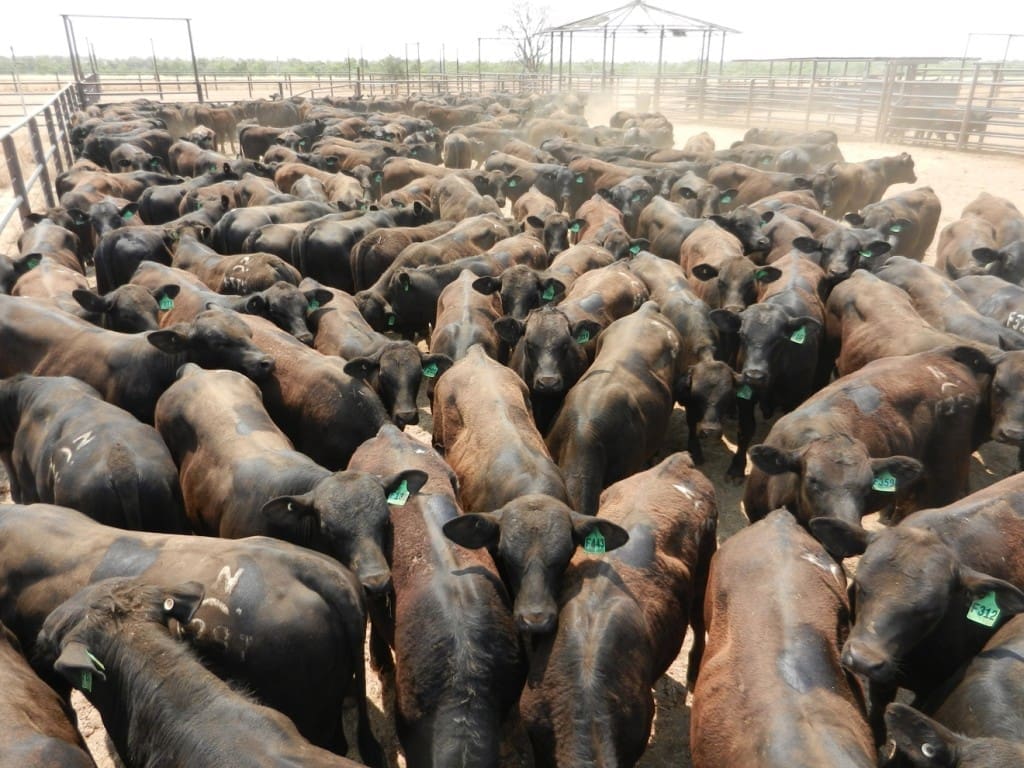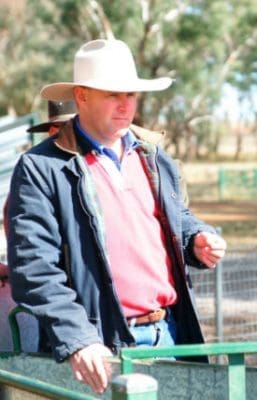
Contract-bred young Ultrablack bulls on the Barkly Tableland
THE autumn bull sales period tends to be dominated by seedstock operations based in southern Australia. While many of the bulls sold over the autumn period head to programs based in the southern production regions, a large portion are purchased with the intention of using them in herds based in the northern production zones.
To ensure the successful adaption of bulls into a northern based program, there are some practical options that both seedstock producers and commercial producers should consider prior to moving the cattle.
One of the most important considerations is to understand the environment the bulls will be heading into.
As obvious as it sounds, the variation in production environments in northern Australia are often overlooked. While adaption to heat is commonly considered, humidity is an equally important environmental impact on production. The ability of cattle to shed heat is essential to maintain production and for bulls to be capable of working in commercial conditions. Phenotypic characteristics such as coat type and colour should be factored-in to decisions on the suitability of bulls to head into a new northern environment.
Having a clear expectation on what bulls are being purchased for, and how they will be used is perhaps one of the essential elements in successfully sending bulls north. It is one thing to look at bulls on-line and images which may highlight the traits that may suit a system. But it is another to understand the background to the bull, its suitability for northern extensive environments and to explain those things to a breeder looking to supply sires into a new program.
Genetic suitability
Having been involved in several northern programs using bulls breed in the New England and southern slopes of NSW, there are several areas I encourage producers to examine as part of their background research.
I firstly recommend bulls be selected from breeders who have a commitment to performance recording and have higher levels of accuracy in those figures. Despite what some people claim, you can’t see the genetics in an animal. All you can see is the result of the environmental effect on the expression of those genes.
There’s little point purchasing bulls to send 1500km north if there is uncertainty regarding their genetic suitability
Bulls are purchased for their genetic potential and for the ongoing contribution they will make. There’s little point purchasing bulls to send 1500km north if there is uncertainty regarding their genetic suitability.
Background preparation for bulls is important. Grassfed bulls tend to transition to northern systems more efficiently and are more able to cope with increased temperature and humidity levels, largely as they tend to be physically leaner.
Younger bulls
Access to younger bulls is often an advantage for many northern breeders. It is generally considered the optimum age for bulls to be introduced to northern programs is from 12 to 18 months. This generally allows the young bull a period of time to acclimatise to the new environment. Structurally-sound, well-grown young bulls are well able to serve. Older bulls seem to take longer to acclimatise and as result often have a shorter working life within the program.
Introducing new bulls to any program requires a period of acclimatisation. This means bulls need to be allowed the opportunity to settle and learn how to survive in their new environment.
In most cases this would mean keeping bulls in yards and small paddocks with some steers or older cattle for a couple of weeks. In regard to bringing bulls into northern programs, the cooler months are much more preferable. Ideally, bulls should be moved north from May to August rather than in the hotter periods later (or earlier) in the year.
Region-specific vaccination
It is important to prepare new bulls for the additional environmental challenges that northern systems face. Bulls headed into areas where ticks are an issue should be pre-vaccinated for tick fever and ideally for Bovine Ephemeral Fever (3 day sickness). Both of these vaccinations are not normally part of the southern bull producers pre-health program. These programs should really take place before bulls head north, and this does require some preparation.
Ideally, pre-purchase discussions can address these issues. The other unusual challenge southern bulls don’t often face is botulism, and again this can be addressed through vaccination. Again, I recommend discussing the need between the breeder and the buyer.
When nearly every bull sold, particularly from well-established programs will be vaccinated against the Clostridial diseases (5-in-1, or 7-in-1), pestivirus and vibriosis, this should be checked prior to purchase.
Other practical areas to discuss pre-purchase include the education the bull has received on property of birth. There are some things that may be entirely new for a bull and if it requires education on arrival, this needs to be planned. Such things that may be new for southern bulls include using urea blocks, walking into spear traps, or new methods of mustering. Knowing the history of bulls prior to their arrival allows an easier transition to their new program.

Alastair Rayner
Alastair Rayner is the Principal of RaynerAg, an agricultural advisory service based in NSW. He regularly attends bull sales to support client purchases and undertakes pre sale selections and classifications. He can be contacted here or through his website www.raynerag.com.au

This is a very real subject.
How many times I have seen big fat overfed bulls taken into the Northern and Western environment, dumped in paddocks and left to their own device. They get a couple of consolation calves and then lay around the water for two years until they aclimatise. They then start to work. It is only once that excess fat has melted off them that you can see what you have really purchased. Fat covers a lot of unwanted traits.
Much easier than following this process………….just buy ADAPTED BULLS